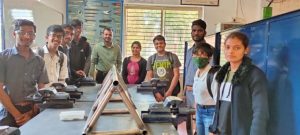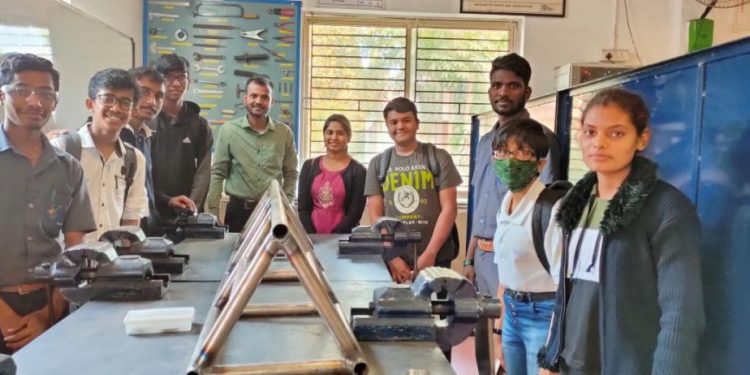“When you want something, all the universe conspires in helping you to achieve it”
A few years ago top star Shahrukh Khan had delivered these epic lines of eminent Brazilian lyricist Paulo Coelho in his home production Om Shanti Om and the dialogue was in the lips of his fans for a long time.
The lines now hold true for a bunch of teen-aged space enthusiasts from Odisha who, against all odds, have been selected to participate in the NASA Human Exploration Rover Challenge to be held in April 2021 in the United States. They are part of a student astronomy team from Odisha known as the Navonmesh Prasar Student Astronomy Team (NaPSAT) to be flown to Huntsville, Alabama in the US to represent India in the international competition staged by the American space agency NASA. The group of 10 school students aged between 14 and 19 is working on building a “human-powered” rover which will be able to move on the surface of Mars.
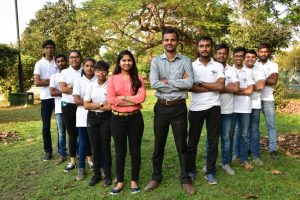
A few of them belong to ‘below poverty line’ category of the government but that hasn’t come in the way of their cravings for excellence. The passionate science enthusiasts are now part of India’s first ever under-19 student astronomy team to represent the country in NASA. Sunday POST talks to some of these future astronauts and their mentors who are on a mission.
For the uninitiated, NaPSAT is an initiative of Bhubaneswar-based Navonmesh Prasar Foundation which aims to promote scientific spirit among school, skill development institute and university students in the field of Space and Astronomy. This 10 member-team has been picked from about 800 aspirants. The team is currently working on various projects like design of space systems, rovers, rockets, satellites and astronomy to participate in various international events under the guidance of Anil Pradhan, an alumnus of Veer Surendra Sai University of Technology (VSSUT), Burla.
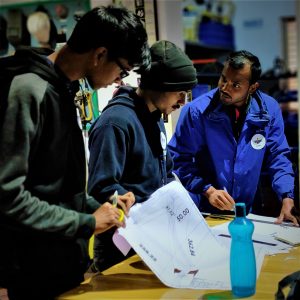
Twenty-five year old Anil is determined to infuse the spirit of science and technology into the creative minds and those think outside the box, especially in villages.
Earlier, Anil had designed several sustainable solutions such as a technology to maximise the use of daylight to reduce electricity consumption. He was also the design engineer for the VSSUT Student Satellite Team, which was India’s first multipurpose students’ rocket mission to monitor Hirakud dam. Anil, who was appointed an Affiliate Member of the American Society of Civil Engineers, also worked as the structural designer of the robot presented by the VSSUT Robotics team at the Asia Pacific ABU Robocon.
On the achievements of these greenhorns, the winner of Global Changemaker and National Youth Icon awards says, “After receiving an invitation from NASA for the 2021 event, I thought of forming a team in Odisha and groom its members so that they can represent India in NASA. My batch mate at VSSUT, Burla Vaishali Sharma came forward to help in the project. We formed a team during the lockdown period and identified 10 special talents out of 800 applicants from Odisha. We took interviews for 15 days to select the team. When I spoke to Kailash Barik, one of the team members, I was impressed by his in-depth knowledge on rovers. Similarly, Danda is another teammate who used to work as a migrant labourer but made it to the team. There was another girl Rina Bagha who was work at a welding shop during the lockdown, too was included in the team. They were automatic choices because of their passion for science and technology.”
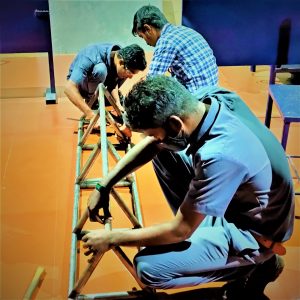
“We first trained them and later sent a proposal for their participation in NASA Rover Challenge. Finally, on August last year we were selected to present the rover in NASA. The 10-member interdisciplinary team has school students as well as ITI students. The team is making a rover which can move on the surface of Mars and would be human-powered. ”
He further adds: “Odisha is always seen as a poverty-stricken state. Though Odisha has a pool of young talents especially in rural pockets, they don’t get the required opportunities. Through this project, I want to give exposure to the raw talents.”
Anil, however, struggles to get funds for this project. “We are in need of about Rs 54 lakh for the purpose. Though the Odisha government has agreed to fund the project, it is yet to be released. As the deadline is not too far, we are trying to get funds from other sources.”
Anil’s elder brother Sunil, also one of the mentors, recently quit his cushy engineering job to make the students realise their dreams. He says that that their rover can handle the weight of two persons while moving on terrains of the Mars and moon. “We will be making a human-powered rover for Mars and the moon. Though more than 100 teams are participating in the event we are confident of making a mark,” he adds.
Mission director Vaishali Sharma who founded NaPSAT along with Anil says, “We are providing platforms to science enthusiasts. I want my students to give hundred per cent to the project and make the country proud.”
Future astronauts speak
The story of Kailash Barik of Balasore is an interesting one. A student of Skill Development Institute, Bhubaneswar, Kailash was busy helping his father in his cycle repair shop. Kailash also helped his father in painting building before joining the NASA project. “One of my teachers from SDI informed me about NaPSAT. I applied for it and got selected. We are working very hard for the project and we are hopeful of making India proud.”
Dati Dandapani Patra from Ganjam was once a migrant labourer. He never imagined that he would be part of the student team of astronauts one day. “After my matriculation, I was working as a migrant labourer because my mother refused to pay for my studies. I lost my father long back. So, I left for Bangalore to work as a migrant labourer to save something for my higher studies. Later, I took admission in SDI with the savings I made by working as a labourer. It was SDI’s Prasant sir who informed me about the rover challenge. I was selected for the project after facing the interview. I am working as a welder in the team.”
Tanvi Mallick, a Class IX student who is the marketing leader of team NaPSAT, says, “I am dealing with all the communications that happen outside the team. Anything related to space and astronomy always attracts me. After getting selected for the project by Anil Sir, I went for a thorough research. We did not really know how to make a rover. Thanks to our mentors we could send our design to NASA.”
About her journey to NaPSAT, Tanvi says, “We have been selected for the NASA Human Exploration Rover Challenge 2021. We are the first high school team from India to achieve the feat. We are going to Alabama in April 2021 and will represent India in this competition.”
Nitish Patnaik from Bhubaneswar is another science enthusiast who is part of the designing team. He says “My job is to design all the parts of the rover. I used solid work software to design and stimulate parts. We started with the main chassis and then we went for suspension and control arms. Soon we will be testing the rover.”
All about NASA Human Exploration Rover Challenge 2021
The NASA Human Exploration Rover Challenge features an engineering design challenge every year at a global level to engage students in the next phase of human space exploration. Organised annually, the event is “a more complex follow-up to the successful NASA’s Great Moonbuggy Race,” read a statement on its official website. The competition invites high school and college students to create a vehicle designed to traverse the simulated surface of another world
